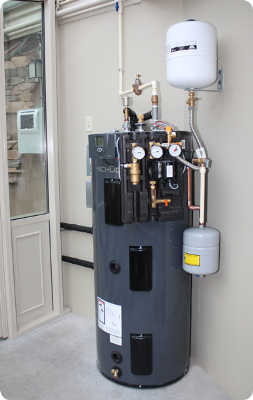The Pine Grove, PA-based Solar Innovations, a manufacturer of customized commercial and residential skylights, greenhouses, sunrooms and conservatories, has launched Hydronic Heating Systems that use water to conduct heat while working concurrently with solar thermal panels.
 Hydronic Heating System
Hydronic Heating System
Solar Innovations’ Hydronic Heating System has been designed as a solution for heating glass structures, which can otherwise be costly. With the Hydronic Heating System, hot water circulation is used to evenly distribute heat throughout the structure. The solar panels placed on the sides or rooftops of the structure heat the water, which circulates through the piping and returns to the main heating unit. The circulated water is subjected to solar exposure using a closed loop system and then recirculated. For overcast days, a backup unit powered by electricity, oil or gas can be installed to function in place of the solar panels.
By using a combination of solar thermal panels and hydronic heat include the savings, customers can benefit not only in terms of immediate savings, but also benefit from the cleanliness and the silent functioning of the system. Unlike traditional heating devices, there is no need to purchase fuel or air filters in a regular basis. Furthermore, the lack of ductwork means less dust and therefore, cleaner surroundings. This greatly benefits structures like greenhouses where accumulation of dust can have an adverse effect on plant growth. Hydronic heating systems do not feature blowers and hence eliminate noise. However, although the Hydronic system is duct-free and uses piping, the backup heating system could require appropriate ductwork.
The Hydronic heating systems can be used with radiant floor heating. This system uses tubes placed below the floor to circulate the heated water. By using the combination of the two, a constant temperature can be maintained over cement or tile flooring areas. Since these floors function as a thermal mass, they can retain the heat for longer periods of time, thus resulting in lesser heat loss.